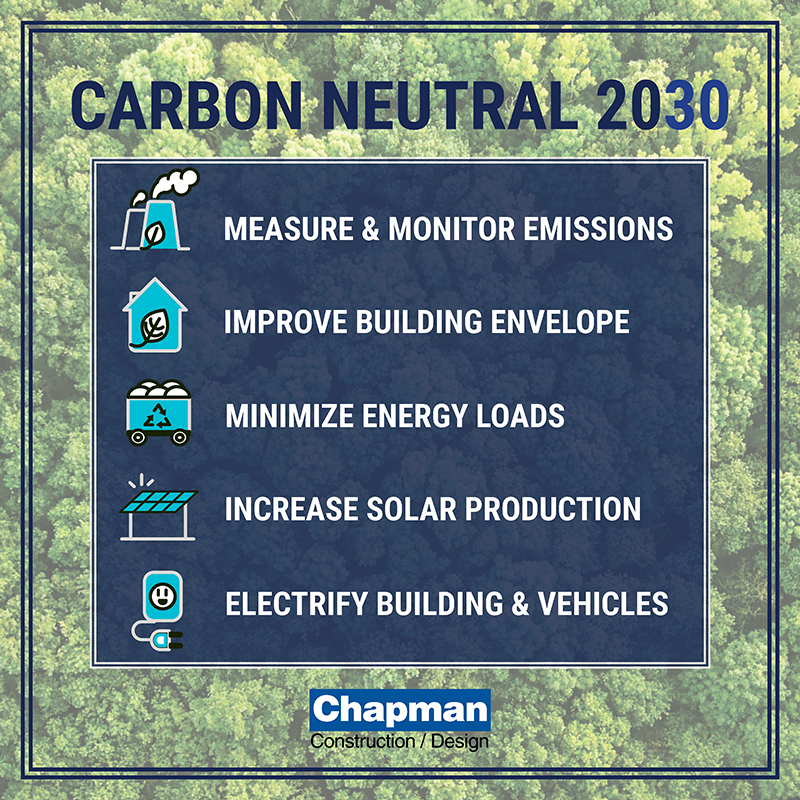
Chapman Construction completes phase one towards carbon neutral by 2030

Newton, MA In September of 2022, Chapman Construction/Design, a construction management company specializing in high-performance building, made a bold commitment to become carbon neutral by 2030. Chapman’s goal is to decarbonize without offsets, meaning they will generate enough renewable energy to satisfy 100% of their annual electricity demand with an onsite roof-mounted solar PV array.
Chapman recently completed the next phase of their decarbonization plan, evaluating the enclosure of their 18,000 s/f building. They measured the building’s air leakage rate by depressurizing it with their Minneapolis blower door equipment. Blower door test equipment measures airtightness in buildings by simulating pressure differences using a fan, door panel, and sensors. They used an infrared camera to identify areas of air infiltration, thermal bridges, and several locations with missing or insufficient insulation.
In addition to gathering the raw test data and identifying leaks, Chapman collaborated with Building Evolution Corp. and developed practical and durable solutions to reduce air leakage. For example, stripping the interior finishes of their large uninsulated conference room, installing continuous air and vapor impermeable insulation to the interior side of the CMU block, then reinstalling interior finishes.
“By creating an airtight and well-insulated building enclosure, we reduce the energy needed to heat and cool our building,” said John Hyde, senior sustainability manager at Chapman. “We can then reduce the amount of solar power needed to offset our energy demand and achieve carbon neutrality.”
In the next several months, Chapman will implement solutions to improve their enclosure by sealing gaps, eliminating thermal bridges, and improving insulation. Careful consideration must be given to material selection, sequence of installation, and cost-benefit analysis of each improvement. Once the upgrades are complete, they will repeat the air leakage test. If the results are sufficient, they will use them to inform the engineering phase, which includes replacing their fossil-fuel-fired packaged rooftop units with electric heat pumps and ERVs and expanding their solar PV array.
“Decarbonizing existing buildings presents us with unique challenges and takes time, so it’s important to act now,” said Hyde. “Commit to decarbonizing your building, develop a plan, make it public, and begin your journey to zero greenhouse gas emissions. Let’s work together to mitigate climate change and preserve the planet.”